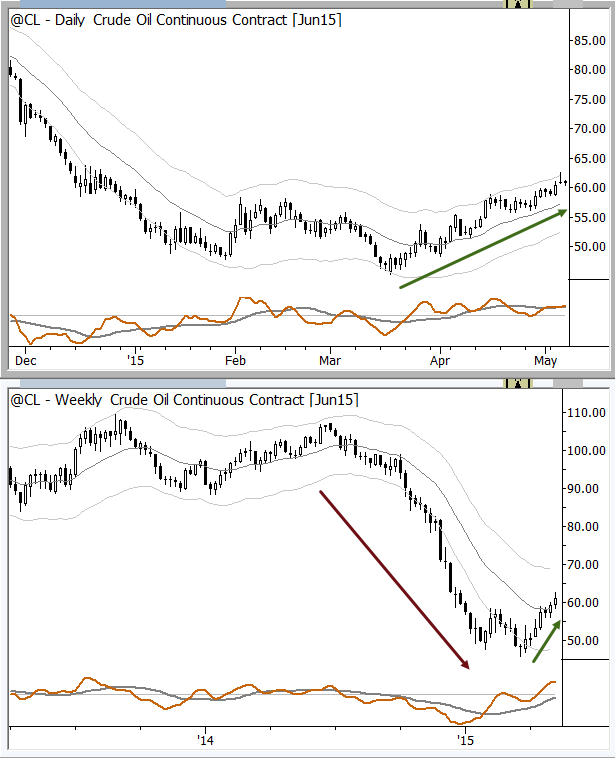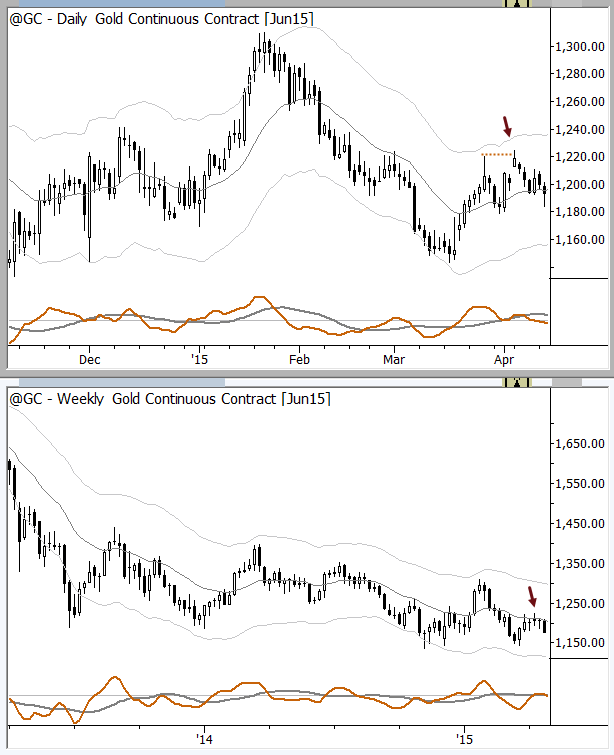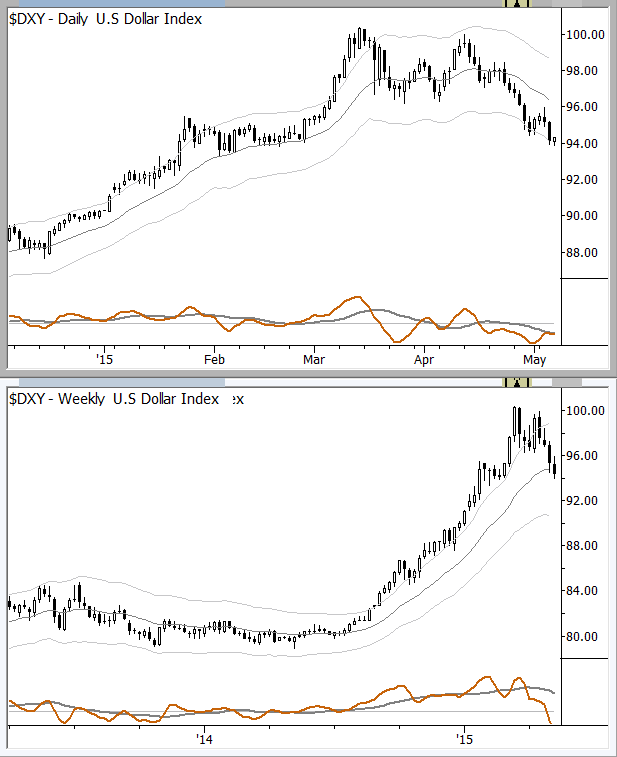Hidden in plain sight: trading multiple timeframe influences
Multiple timeframe analysis is almost a buzzword in technical analysis. I have been involved in markets actively for two decades, and have been an active participant in dialogue about markets for most of that time. It is interesting to see different techniques take the spotlight as groups of traders hold out hope that some new technique offers solutions to consistent profits: neural nets, quantitative analysis, scalping, and multiple timeframe analysis are some examples that immediately come to mind. These tools tend to move through the public awareness almost like a fad, eventually fading from notoriety when they fail to deliver on over-hyped promises.
Of course, no technique offers a simple solution to all the problems of trading. We know this: There is no magic formula; there is only the disciplined management of risk, in alignment with the (very small) underlying statistical edges in the market. However, though none of these techniques could possibly be the Holy Grail, they often do hold some important lessons. One of the key lessons from multiple timeframe analysis is understanding how trends develop, and, eventually, end on multiple timeframes, and we can use this awareness to give us an edge in some specific trades.
Multiple timeframe analysis does not always have something to say about a market or a trade. This is true, for one reason, because market action is mostly random, and most markets do not offer any tactical edge at most times--trading opportunities are fleeting. When these opportunities, imbalances of buying and selling pressure, do appear, even then there are not always multiple timeframe influences. Multiple timeframe analysis is a tool we use and apply in some situations.
Fighting the trend?
One of those situations arises when we are contemplating a trade that is against the trend on the higher timeframe. For instance, look at the chart of crude oil futures below, and imagine you are holding a long trade based on the uptrend on the daily timeframe (green arrow):

While this trade might make sense, the weekly timeframe--quite literally, the bigger picture--shows that this market has been in a downtrend for some time, and very well could still be in a downtrend. It is certainly possible that this daily uptrend we have identified could be a pullback setting up another selloff on the weekly timeframe.
What do we do with this information? There are many choices, and the right answer will depend on who you are, how you trade, and how you think about risk. Here are some possibilities:
- Skip the trade on the daily timeframe because we don't want to trade counter to the longer trend. This is ok, but there is a possibility that the weekly chart has bottomed. If we always skip trades like this, we will never be able to catch turns on the higher timeframe.
- Take the long trade, but tighten stops faster and take profits quicker. We know if the daily trade fails it could fail into a pretty dramatic selloff driven by the higher timeframe pattern.
- Ignore the higher timeframe considerations and just focus on what we see on a single timeframe. If we've done our work properly in creating our trading system, we have an edge and can just focus on that edge.
Those are some possible answers, with good arguments for each. They are all valid, but the key is that you must have all of this decided before you start trading--it has to be part of your trading plan.
Triggering entries
We can also use multiple timeframe influences to trigger trade entries. Look at the chart of gold futures below. I've highlighted a fairly unimpressive failure test (short entry) on the daily chart. However, what does the weekly timeframe show?

In this case, the weekly chart showed some kind of pullback in a market that is putting pressure on what appears to be a multi-year support level. That's a situation where we might want to be short into that pressure, and the unimpressive daily failure test may take on more significance. How do we categorize this trade? Is it countertrend? Failure tests are countertrend trades, and the daily was in an uptrend at the time, but it is also with-trend on the higher timeframe. You can label this however you wish, but be clear on the influences and what you are trying to accomplish with the trade.
This is a rich subject, and one that is often glossed over. The typical advice we hear is to not take trades against the higher timeframe trend, but I think there are some very serious problems with that advice. A better plan is to learn to read market structure, to try to understand these conflicting flows, and to have a clear trading plan for handling these conflicts. Whether you ignore them, use them to trigger entries, or use them in a risk management context, you do have to have a clear plan for these patterns.
An exercise
Let me leave you with an exercise. Look at the chart of the Dollar index below, and consider the possible multiple timeframe influences. The daily chart is pretty ugly--multiple tops, momentum rolling over, new downside momentum, bear flags (consolidation patterns) have been breaking down cleanly and easily--looks like the end of the run for the Dollar. But, is there something else going on here we should be aware of? Food for thought, and watch how this situation develops over the coming weeks:




